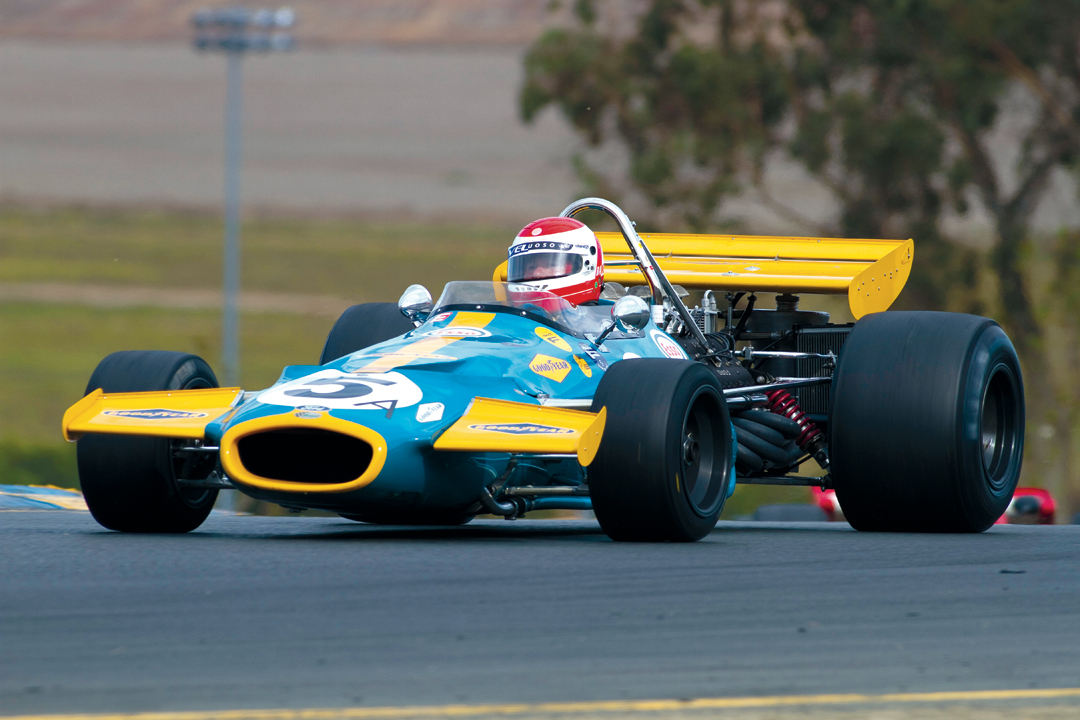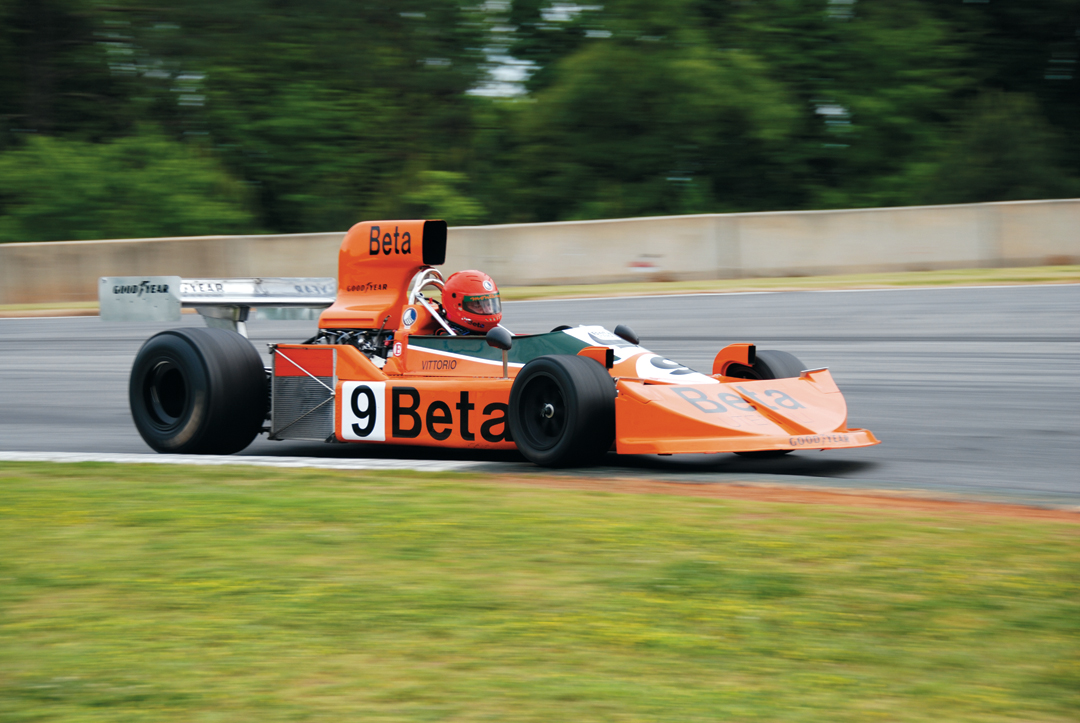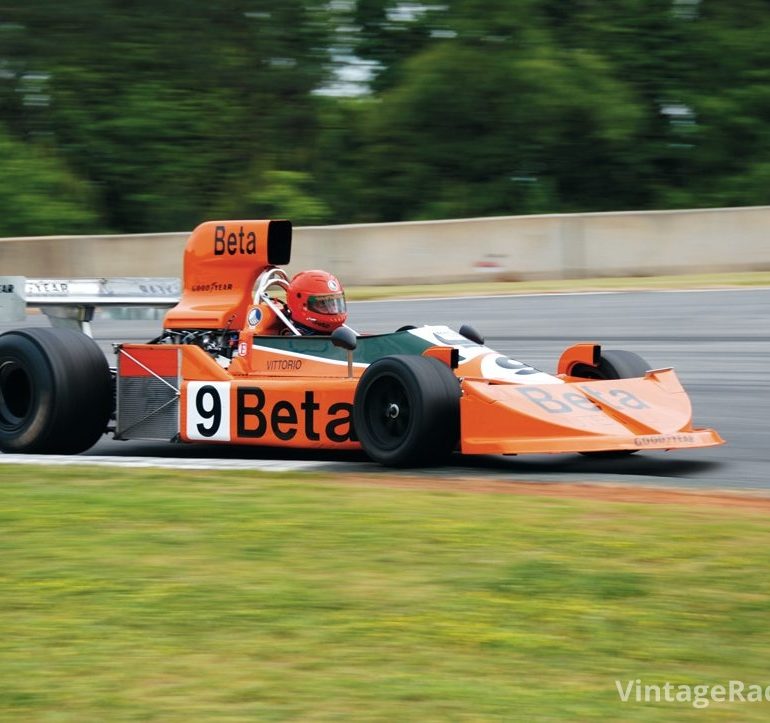After some 50 years of automobile racing, the Grand Prix Formula, or Formula One, was formed by the FIA (Federation Internationale de L’Automobile) in 1950 with its first race, the British Grand Prix at Silverstone. This was to be the first World Championship for Drivers, in the world’s most technically advanced single-seater racing cars. In 1958 the world Constructors Championship was added. Now one would at last know who the best driver in the world was, as well as which manufacturers had constructed the best racing car. FISA was Formula One’s administrative body, which saw that everyone played by the ever-changing rules. In this guide I am going to cover the period 1966-1983 for cars built to a 500-kilogram to 585-kilogram weight minimum, and powered by 3.0 liter normally aspirated engines.
Formula One started from very humble beginnings. Teams were comprised of groups of talented people working out of small garages, trying to find the money to go racing. During this time frame the miracle of the racing sponsor was created, and teams grew in size. Great inventions were designed, such as the 3.0-liter Cosworth DFV engine, the slick racing tire, aerodynamic aids such as simple wings to full ground-effects. This was the beginning of the English racing car industry with manufacturers who relied heavily on Cosworth engines and Hewland gearboxes, and the racing comeback of Alfa Romeo. World Championship drivers included Andretti, Brabham, Fittipaldi, Hill, Hulme, Hunt, Jones, Lauda, Piquet, Rindt, Rosberg, Scheckter and Stewart.
Most Historic Formula One races are now run by Grand Prix Masters, which allows cars to run through 1977 that are non-turbo, non-ground-effect cars. The Monaco Historic Grand Prix is for cars 1977 and older.
1970 Brabham BT33
Brabham cars (or Motor Racing Developments) had success in Formula Junior, Formula Two, Formula One and sports car racing. Jack Brabham was a special person; a man who built his own cars and drove them to a Formula One World Championship. With designer Ron Tauranac, some very successful designs were built and raced. In 1970, the BT33 was the F1 team car for drivers Jack Brabham and Rolf Stommelen. This car was significant in that it was the first monocoque design and the last car that Brabham raced. Three cars were built, and with Brabham behind the wheel, one won the South African Grand Prix. At Monaco, he was in the lead until a mistake on the very last corner. But for unreliability, Jack in the BT33 would have been a contender for the championship. When Brabham retired, Tauranac ran the team one more year and then sold it to Bernie Ecclestone. Today, the BT33 is a great car for the Masters F1 Series and the Monaco Historic Grand Prix.

1976 March 761

March Engineering was started, in 1969, by Max Mosely, Robin Herd, Alan Rees and Graham Coaker. Their goal was to build and sell successful racing cars for Formulas One, Two, and Three. They had some success in Formula One and by 1976 they built one of their better cars. The 761 was designed by Robin Herd. With a straightforward monocoque similar to the F2 car, it was a conventional design that was very user friendly and featured a Cosworth DFV with a Hewland gearbox. The team ran cars for Ronnie Peterson and Hans Stuck, but the sponsorship changed through the season as the team searched for money. The 761 was the fastest car in a straight line, which allowed Peterson to win the Italian Grand Prix at Monza. There should have been more success, putting Peterson in the points, but many times the car dropped out with mechanical failures. Today, the 761 is a good choice for the Masters Formula One Series and the Monaco Historic Grand Prix.
Criteria Used For Assessing Valuations for this Guide:
- Degree of Originality
- Overall Condition, Restoration
- Technology, Design, Coachbuilder
- Production Numbers/Rarity
- Competition History
- Ownership History, Documentation
- Modern Event Eligibility
Regional Variances
The prices stated in this guide are based on U.S. values. The values of historic racing cars can vary as much as 25%-35% in other countries, depending on local market appeal, currency rates, import duties, and VAT. Most of the time, we are able to document known sales or closed escrows, as they say in real estate. When this is not possible, a logical estimate of the car’s value is given, based on its sales history and relationship to cars of its type.
The prices stated in this guide are based on U.S. values. The values of historic racing cars can vary as much as 25%-35% in other countries, depending on local market appeal, currency rates, import duties, and VAT.
LEVEL |
VALUATION CATEGORIES |
|---|---|
I |
The best combination of all criteria. |
II |
Satisfies mid-range of criteria. |
III |
In need of restoration. Meets only a few points of criteria |




